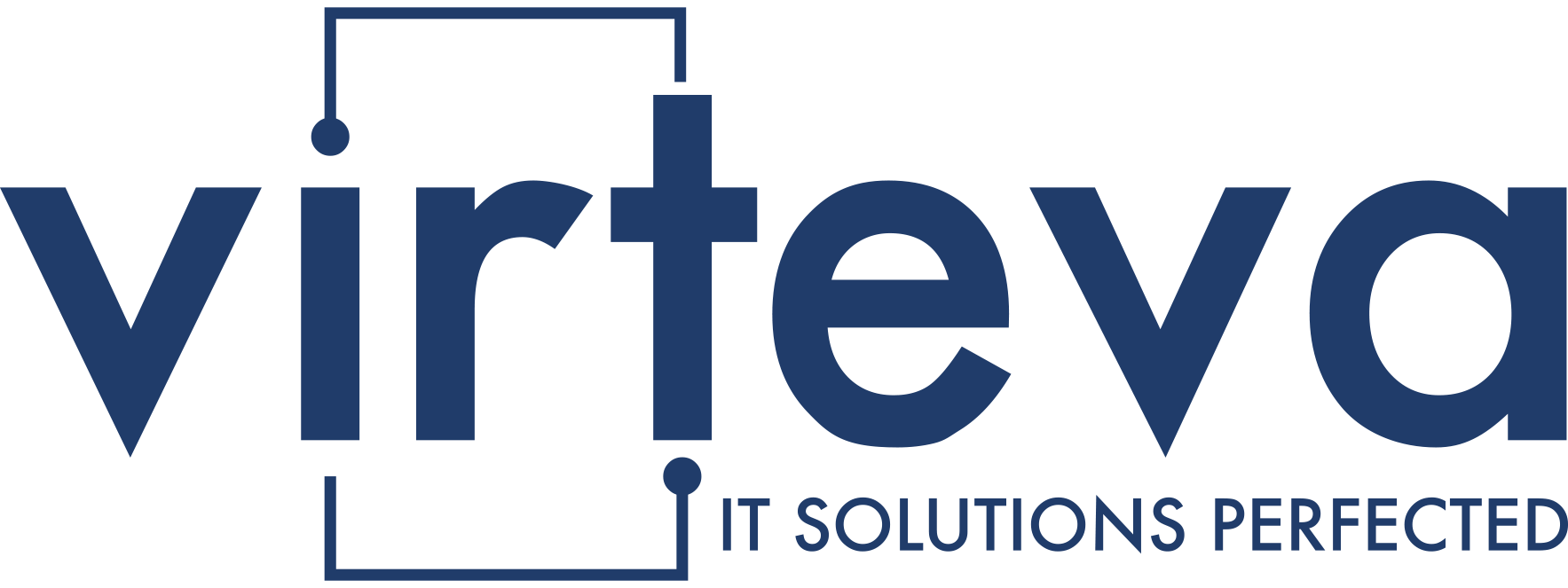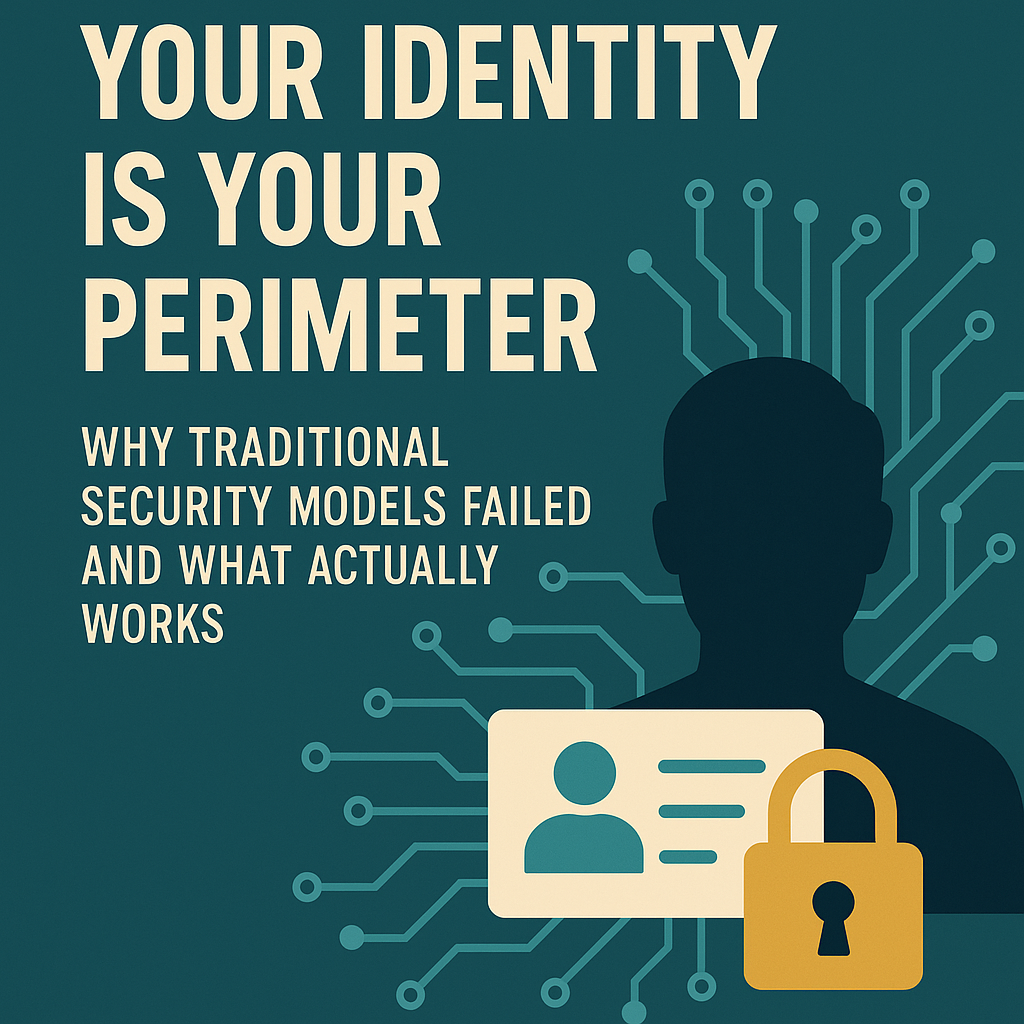Here’s a fun fact: 61% of data breaches start with compromised credentials. Not zero-day exploits. Not sophisticated malware. Someone’s username and password.
Here’s a funnier fact: Most organizations still secure their networks like it’s 2005.
If you’re an IT leader whose security strategy revolves around firewalls, VPNs, and hoping your users don’t click suspicious links, we need to talk. Because while you’re building higher walls around your network, your employees are working from coffee shops, accessing company data from personal devices, and sharing files with contractors who may or may not have security training.
Your perimeter isn’t your network anymore. It’s your identities. And most organizations are protecting them about as well as they protect their lunch money.
The Perimeter That Doesn’t Exist
Remember when security was simple? Users worked in offices. Data lived on servers. The internet was that scary place you occasionally visited to check email. You built a firewall, configured some VPN access, and called it a day.
Those days died with the BlackBerry.
Today’s reality:
- Your employees work from everywhere
- Your data lives in dozens of cloud services
- Your business applications are accessed from devices you don’t control
- Your contractors, partners, and vendors need system access but aren’t on your payroll
Meanwhile, your traditional security architecture assumes everyone inside the network is trustworthy and everyone outside is a threat. That assumption will bankrupt you.
Consider this scenario: Sarah from Marketing accesses SharePoint from her home WiFi to update a customer presentation. She’s using a personal laptop that hasn’t seen a corporate security update in six months. Her WiFi password is “password123” because she hasn’t changed it since 2019. She’s downloading files to her local machine because the internet is spotty.
Your firewall sees this as a legitimate user accessing approved resources. Your VPN logs show a successful connection. Everything looks normal.
Everything is not normal.
Identity-First Security: The Only Approach That Scales
Here’s what every CIO needs to understand: In a world where the perimeter doesn’t exist, identity becomes your security foundation. Not usernames and passwords—comprehensive identity governance that treats every access request as a potential threat and every user as a potential risk.
Zero Trust, Real Implementation
Zero Trust isn’t a product you buy—it’s an architecture you build. And it starts with identity.
Real Zero Trust means:
- Every user is verified before every access attempt
- Every device is validated and compliant before connecting
- Every application enforces contextual access policies
- Every data interaction is logged and analyzed
This isn’t theoretical. Microsoft’s identity platform makes this implementable for mid-market organizations that couldn’t afford enterprise security teams just five years ago.
Conditional Access: Policy-Driven Security
Conditional Access transforms identity from a simple username/password check into a dynamic risk assessment. Consider these real-world policies:
- Marketing team accessing customer data from unmanaged devices? Require additional authentication and block download permissions.
- Finance users accessing payroll systems outside business hours? Require manager approval and enhanced monitoring.
- Executive team accessing email from international locations? Enable advanced threat protection and session recording.
These aren’t complex rules that require dedicated security staff. They’re policy-driven protections that scale automatically.
The Hidden Identity Risks Killing Mid-Market Organizations
Shadow SaaS Proliferation
Your users are signing up for productivity tools with their work emails. Right now, without IT approval. That “helpful” project management tool? The AI writing assistant? The file sharing service that “makes collaboration so much easier”?
Each one represents an identity relationship you don’t control, with data access you don’t monitor, protected by security standards you can’t verify.
Microsoft 365’s Cloud App Security (now part of Defender for Cloud Apps) discovers these shadow applications and brings them under governance. But only if you’re using identity-first security architecture.
Privileged Access Sprawl
Here’s a question that will keep you awake tonight: How many people in your organization have administrative access to business-critical systems?
If you don’t know the exact number, you have a privileged access problem. If that number is higher than 5% of your user base, you have a privileged access crisis.
Traditional IT approaches grant admin rights liberally because it’s easier than implementing proper role-based access. But every additional privileged account exponentially increases your attack surface.
Partner and Vendor Access
Your organization probably provides system access to contractors, vendors, consultants, and business partners. How do you manage those identities? Guest accounts with passwords shared via email? Dedicated accounts that never expire? Shared credentials that multiple people use?
Every external identity without proper governance is a potential breach vector. And since external users often access your most sensitive business data, they represent your highest-risk identity category.
Microsoft’s Identity Platform: Enterprise Security for Mid-Market Budgets
Microsoft Entra ID (formerly Azure AD) delivers identity security capabilities that were exclusive to Fortune 500 companies just five years ago. For mid-market organizations, this levels the playing field against better-funded competitors and sophisticated threat actors.
Passwordless Authentication
Passwords are the problem. They’re easily compromised, frequently reused, and universally hated by users. Passwordless authentication eliminates the attack vector while improving user experience.
Windows Hello for Business, FIDO2 security keys, and Microsoft Authenticator app create strong authentication without password complexity requirements. Users get faster, more convenient access. IT gets dramatically improved security posture.
Risk-Based Access Controls
Entra ID’s Identity Protection uses machine learning to assess risk in real-time. Impossible travel patterns, anonymous IP addresses, unfamiliar devices, and suspicious user behavior trigger automatic response policies.
This isn’t reactive security—it’s predictive protection that stops breaches before they start.
Privileged Identity Management
Just-in-time access, approval workflows, and time-limited elevation transform privileged access from a permanent security risk into a governed business process.
Administrators only have elevated permissions when needed, for the time required, with full audit trails. This reduces your attack surface by 90% while improving operational security.
Implementation Reality: What Success Actually Looks Like
Phase 1: Foundation (Months 1-2)
- Comprehensive identity audit and risk assessment
- Single Sign-On (SSO) implementation for all business applications
- Multi-Factor Authentication (MFA) enforcement for all users
- Basic conditional access policies for high-risk scenarios
Phase 2: Governance (Months 3-4)
- Privileged Identity Management deployment
- Role-based access control implementation
- Guest user governance and lifecycle management
- Application permission auditing and cleanup
Phase 3: Intelligence (Months 5-6)
- Identity Protection and risk-based policies
- Cloud App Security for shadow IT discovery
- Advanced threat analytics and response automation
- Continuous compliance monitoring and reporting
This isn’t a multi-year project requiring dedicated security staff. With proper planning and Microsoft partnership, mid-market organizations implement comprehensive identity security in six months.
The Business Case for Identity-First Security
Compliance Confidence GDPR, HIPAA, SOX, PCI-DSS—every major compliance framework requires identity governance. Robust identity management transforms compliance from a quarterly stress event into an automated business process.
Audit Simplification “Who has access to what, when, and why?” becomes a query instead of a three-week investigation involving multiple systems and spreadsheet reconciliation.
Incident Response Acceleration When (not if) you face a security incident, identity-centric architecture provides the visibility and control needed for rapid containment and remediation.
Business Continuity Remote work, BYOD policies, partner collaboration—all require identity security that scales beyond traditional network boundaries.
The Organizations Getting This Right
Mid-market companies implementing identity-first security see measurable improvements:
- 70% reduction in password-related support tickets
- 85% faster incident response times
- 90% improvement in compliance audit preparation
- 95% reduction in privileged access risks
But the most important metric? They sleep better at night knowing their security architecture scales with their business growth instead of creating operational friction.
Your Identity Security Assessment
Ask yourself these questions:
- Do you know exactly who has access to what systems right now?
- Can you provision and deprovision user access automatically?
- Do your access policies adapt based on risk factors?
- Can you detect and respond to identity-based threats in real-time?
- Does your security architecture support business growth and operational flexibility?
If you answered “no” to any of these questions, your identity security needs immediate attention.
The good news? You don’t need to build this capability from scratch. Microsoft’s identity platform provides enterprise-grade security that mid-market organizations can implement and manage without massive security teams.
The bad news? Your competitors are probably already doing this. And threat actors are definitely targeting organizations with weak identity governance.
Your perimeter is your identity. It’s time to secure it like your business depends on it.
Because it does.
Ready to transform your security architecture for the modern workplace? Virteva’s Identity & Security services help mid-market organizations implement comprehensive identity governance that scales with business growth. Let’s discuss how Microsoft’s identity platform can eliminate your security gaps while improving operational efficiency.




